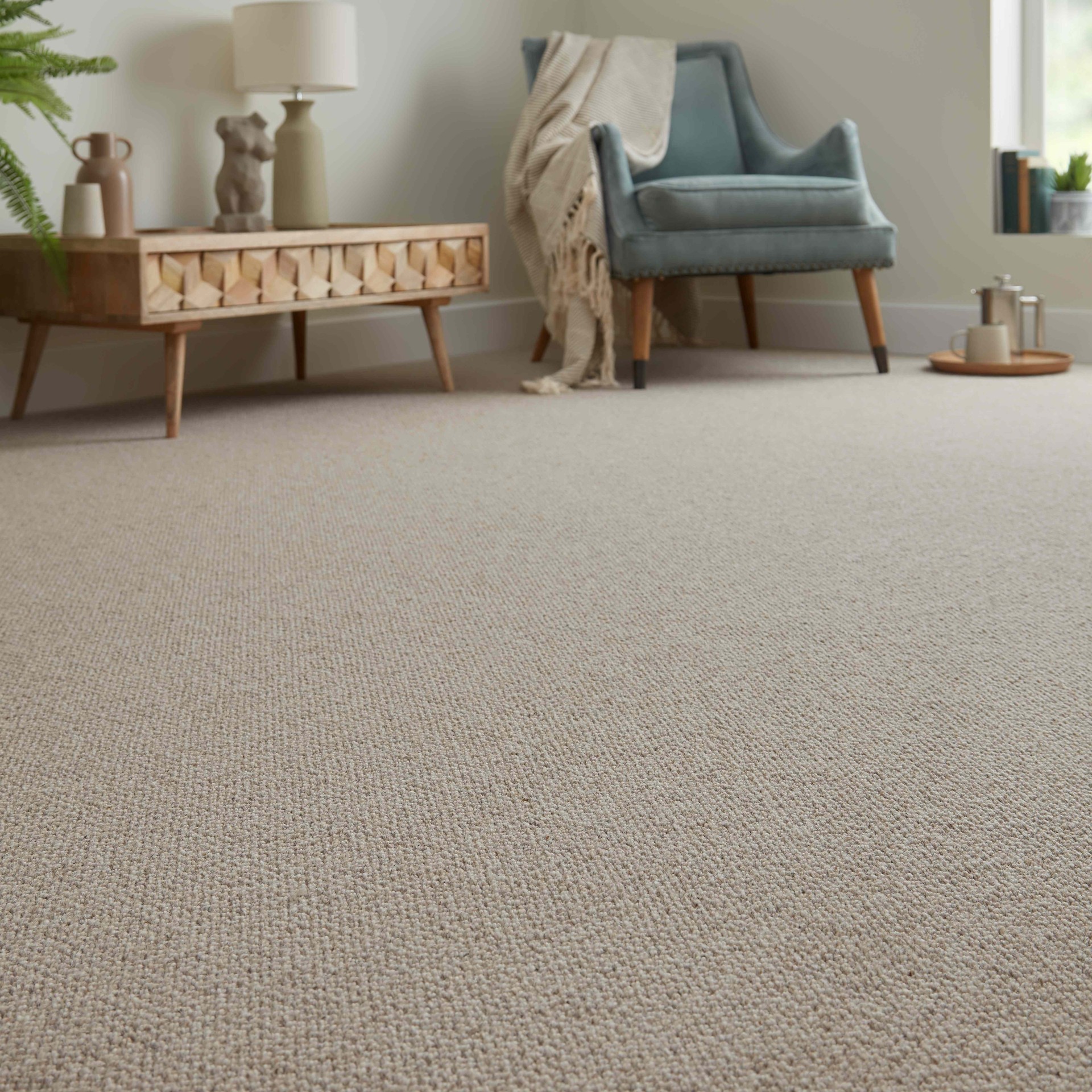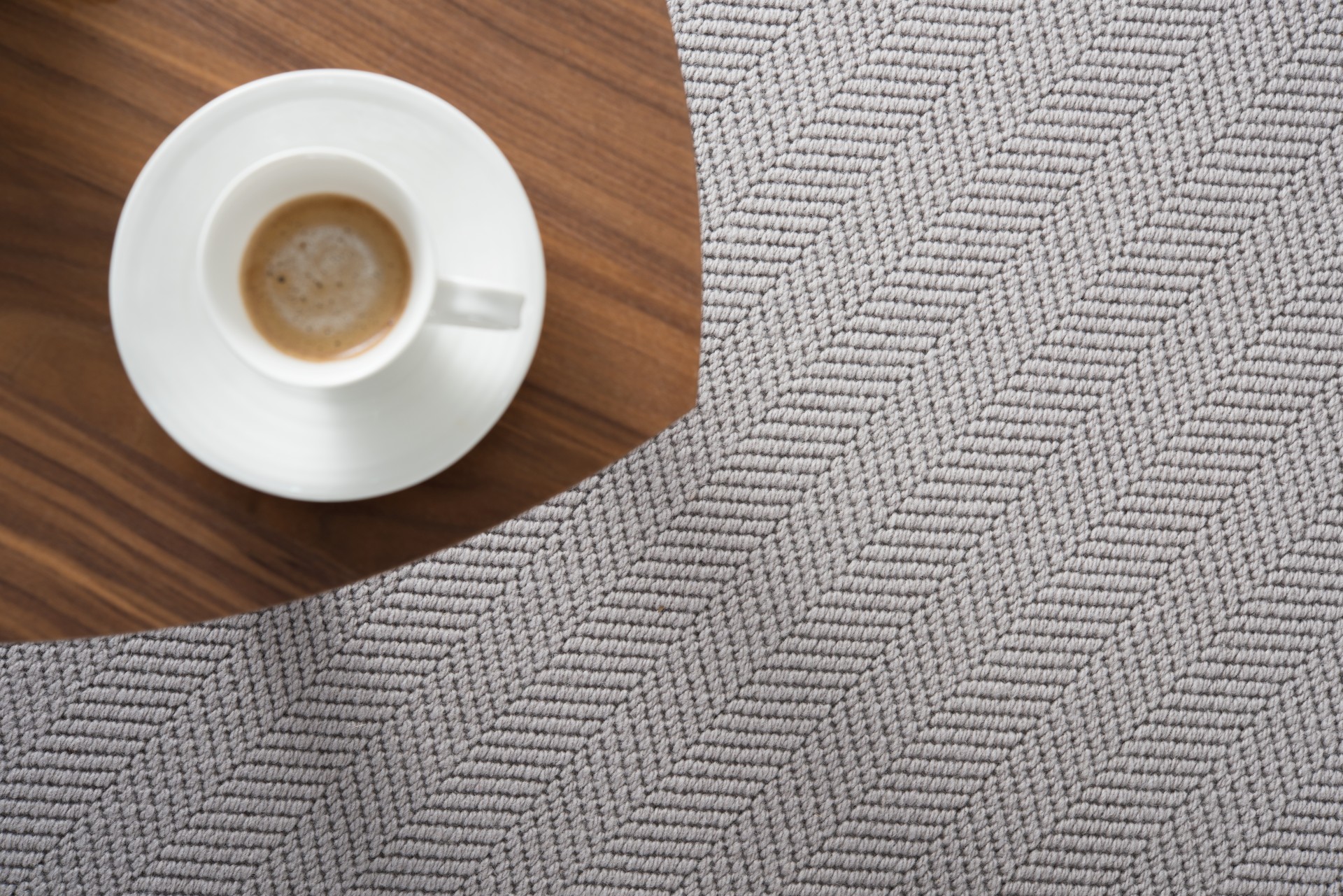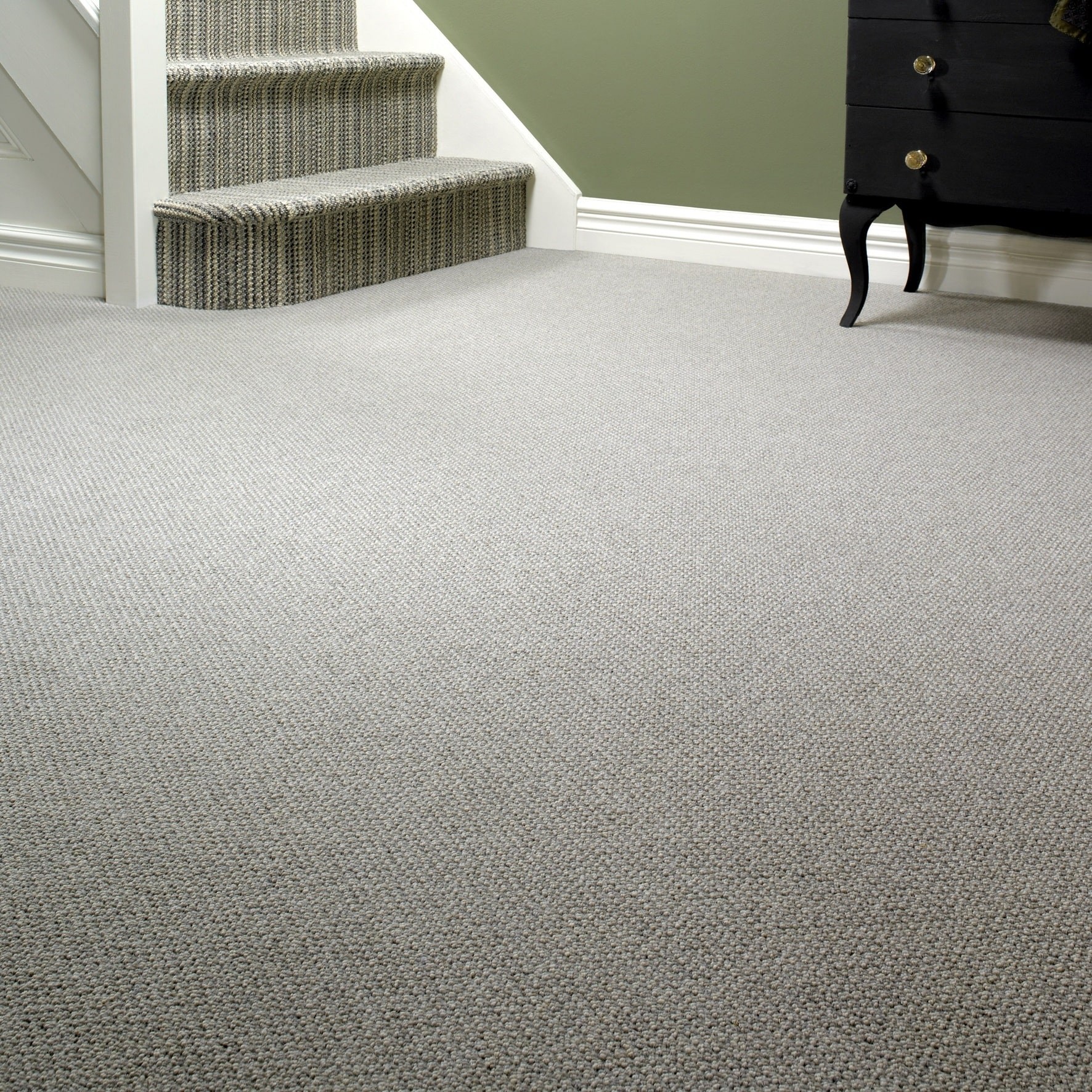Flooring experts lay down their advice on the best carpet for living rooms
Choosing the best carpet for living rooms is about finding the best solution that not only looks great, but will also withstand the rigours of daily life
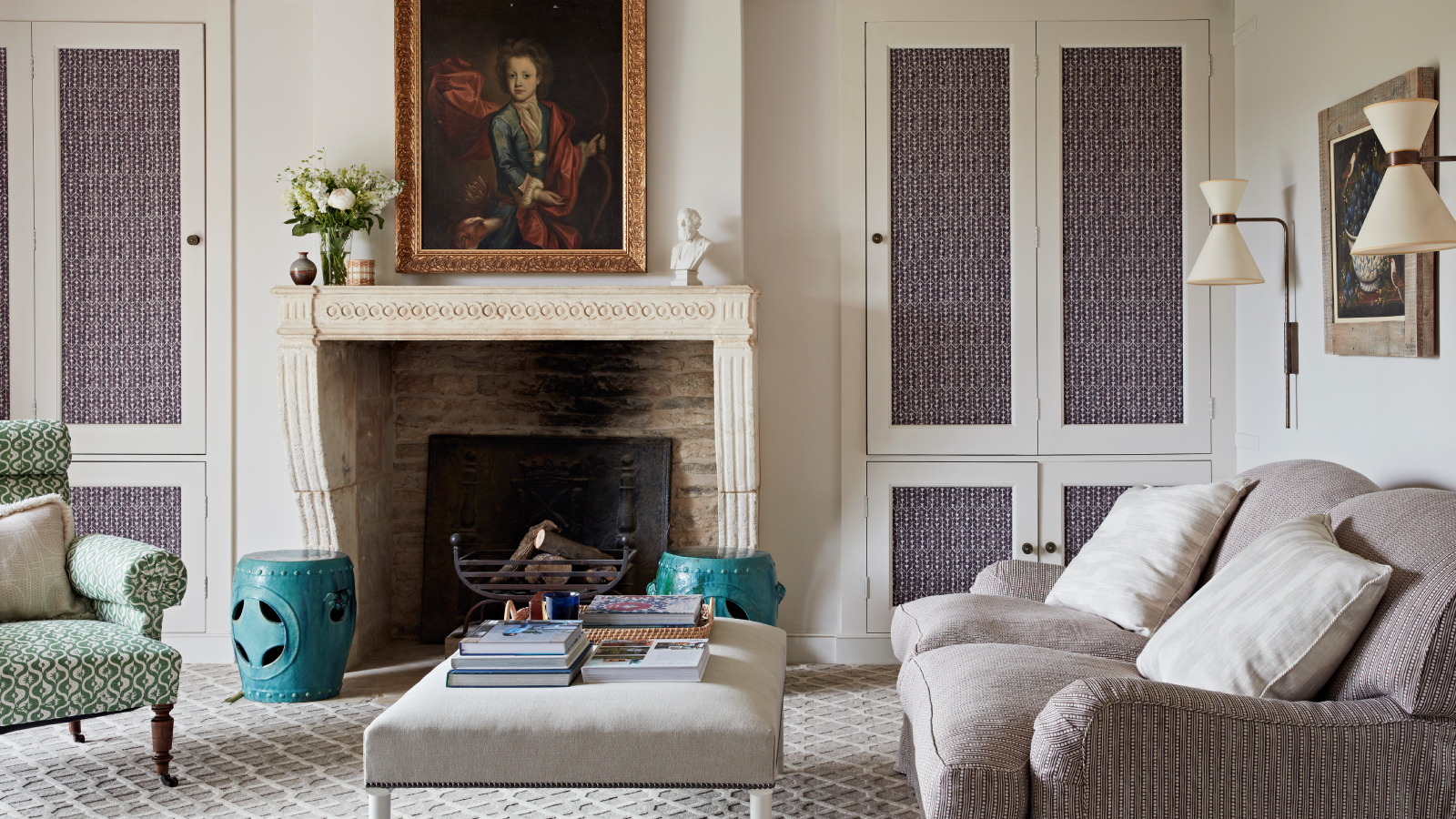
if you're looking for the best carpet for living rooms, you'll likely have a list of requirements. Soft, stylish and able to deal with daily life means we expect a lot from the carpet we end up choosing.
But, with a variety of different types of carpet available, which ones should we be considering and which ones should we steer clear of? Which carpet will give us the cosy feeling underfoot we crave and which ones will leave us wanting to walk away?
We asked a variety of flooring experts what is the best carpet for living rooms and here's what they recommend for a solution underfoot that won't just feel luxurious, but will work with your interior design, your budget and your busy life.
What you need to think about when choosing the best carpet for living rooms
When choosing the right carpet for your space there are five main considerations: material, pile, design, practicality and cost.
Different materials work well in different types of space and the pile will affect the feeling underfoot. “High-pile carpet designs create an almost cloud-like sensation underfoot, transforming everyday spaces into luxurious retreats," says Jodie hatton, design manager at Brintons.
"These plush surfaces are particularly transformative in living rooms where comfort is paramount," she explains. Their natural insulating properties and sound-dampening abilities add functional benefits to their undeniable aesthetic appeal, making them a smart investment in your home's future.”
But, as well as the physical make up of the carpet, you'll also need to consider the way it will affect the overall appearance of your space, meaning your living room ideas, colours and furniture will all play a part in your decision making.
“Flooring can dramatically change the tone of a living room, so it’s important to choose the colour that best fits the space and consider the environment you are wanting to achieve," advises Sarah Jenkinson, product manager at Kingsmead.
"Natural coloured carpets remain the most sought after. With their versatile qualities and varying shades they can work within a number of different schemes whilst still creating an inviting and welcoming feel" continues Sarah. "They can also provide the perfect foundation for homeowners to experiment with colour and pattern, particularly with soft furnishings and wall coverings."
There's a strong element of practicality that you'll need to take into account too. Is your living room a separate snug room, or an open plan space that merges into a kitchen or dining room? If it's the latter, you'll likely be using different types of flooring to help zone the space in which case this will also impact on your carpet choice. Having a smooth join between your living room carpet and kitchen floor tiles for example, may influence how deep a pile you choose.
And finally, the all important matter of cost and budget which will influence how you choose the best carpet for your living room.


Jodie Hatton is a textile designer with over 10 years of experience in bespoke design with a focus on high-end interior projects. She is the Design Manager at Brintons, purveyors of designer carpets, and she is currently working towards completing a master's in design research focusing on sustainable and regenerative design solutions.
Best types of carpet for living rooms
Wool carpets – a warm, durable and sustainable option
Wool is a great choice for all kinds of areas of the home, including when it comes to choosing the best carpet for stairs.
"If you’re keen to fit a living room carpet made from natural fibres, wool is probably a main contender," confirms experienced homes and interiors journalist Rebecca Foster. "This resilient and highly durable material results in a high-quality carpet that will last for years. It’s also sustainable, not to mention the fact that it’s super-soft underfoot and is a good insulating material."
“A wool carpet is a wonderful choice for a living room because wool has a textured design adding depth and subtle visual interest to the floor, always a great look for any stylish living room," adds Alexandra Hindle from Cormar Carpets.
"It's a fabulous fibre, natural, renewable, high quality and can feel luxurious under foot," she adds, "and as it's also a great insulator and naturally flame retardant, it's the perfect choice for any lounge.”
It also has the benefit of being breathable meaning it will be warm in winter, but remain cool in summer – perfect if you have a south-facing living room that benefits from lots of sunshine.
"A wool herringbone is a timeless choice for sitting rooms," suggests Lorna Haigh, creative director at Alternative Flooring. "Wool Skein gives a contemporary look and is called a flatweave as it does not have a huge amount of bouncy pile when you compare it to other styles of carpet. If you are considering a plainer wool carpet, where possible only use these flat woven carpets in spaces where they can be installed in a single width of 4 or 5m widths."
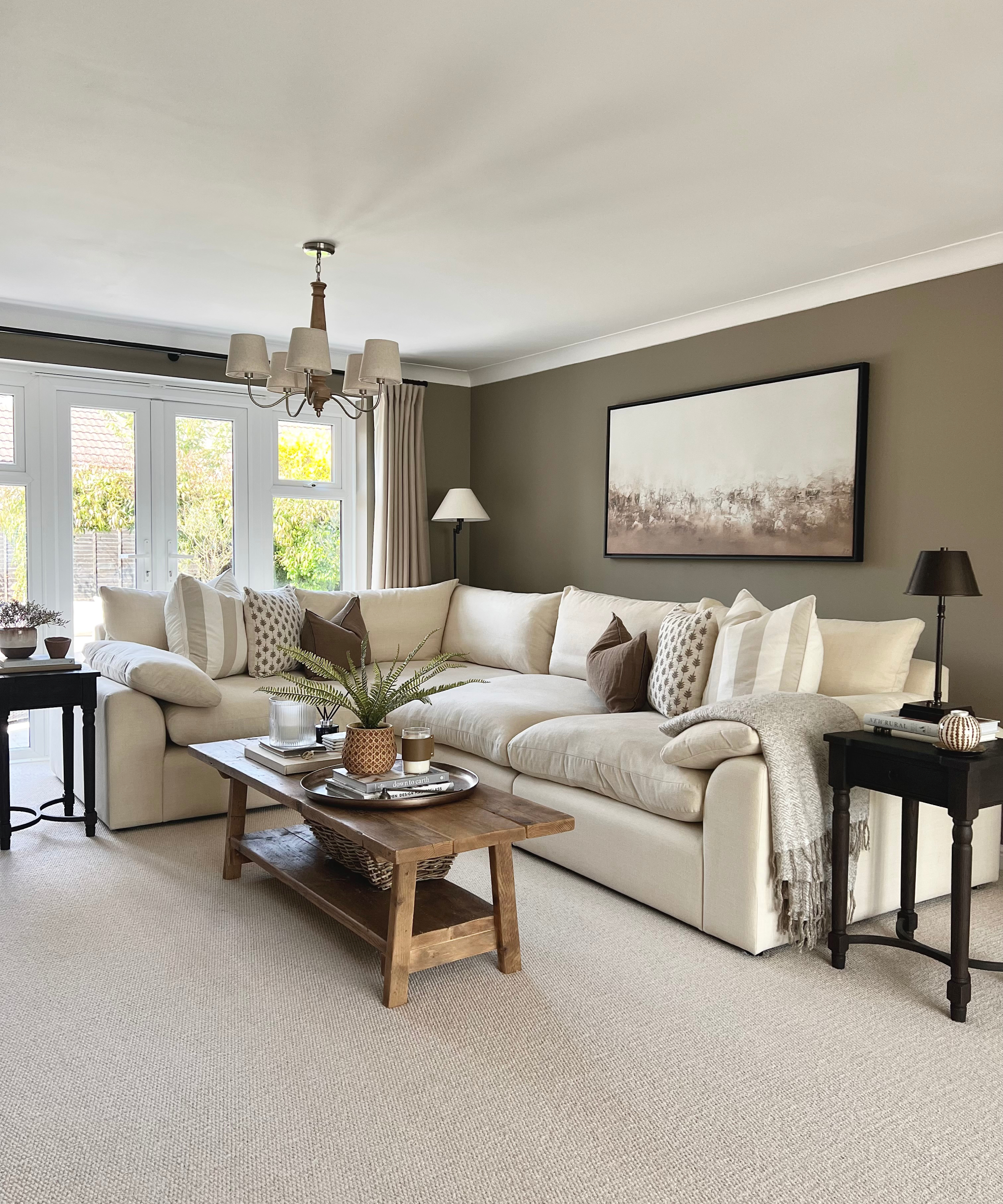

Rebecca began her journalism career writing for a luxury property magazine in Bangkok, before re-locating to London and becoming a features editor for a self build magazine. She is an experienced homes and interiors journalist and has written for many homes titles.

Lorna Haigh, Creative Director at Alternative Flooring, is a trailblazer in the world of interiors, championing design-led, sustainable flooring. With a passion for creativity and innovation, Lorna curates bold, stylish collections that challenge the conventional. Alternative Flooring stands out for its unique, ethically sourced carpets, rugs and runners, blending craftsmanship with contemporary design. Under Lorna’s creative leadership, the brand continues to push boundaries, making floors an artistic statement in every space.
Wool carpets to consider for your living room
Manmade carpets in living rooms
Although wool offers a variety of benefits in living rooms, manmade carpets, such as those made from polypropylene or nylon, offer a very hardwearing alternative to 100% wool if you are weighing up the benefits of wool vs polypropylene.
And, while they are often specified for areas of high traffic, if you are prepared to pay a little more, you can find synthetic carpets that are manufactured specifically to feel soft underfoot – perfect for rooms meant for comfort.
“Some manmade fibres, like nylon 6.6, offer the same benefits as wool carpets but with better cleaning and maintenance properties,” says Gregory Powley-Lynch, operations director at Elements London.
A popular alternative to wholly synthetic carpets are wool blend carpets such as this Scirocco wool blend from Tapi Carpets & Floors. These are also known as '80/20 wool' due to the fact that they are usually 80% wool and 20% something else, such as polypropylene.
"A saxony carpet for example offers an opulent deep pile with long tufts, making for a beautifully soft feeling underfoot," says Rebecca Foster. "Velvet varieties are also a good choice, thanks to the smooth feel of the cut pile finish."
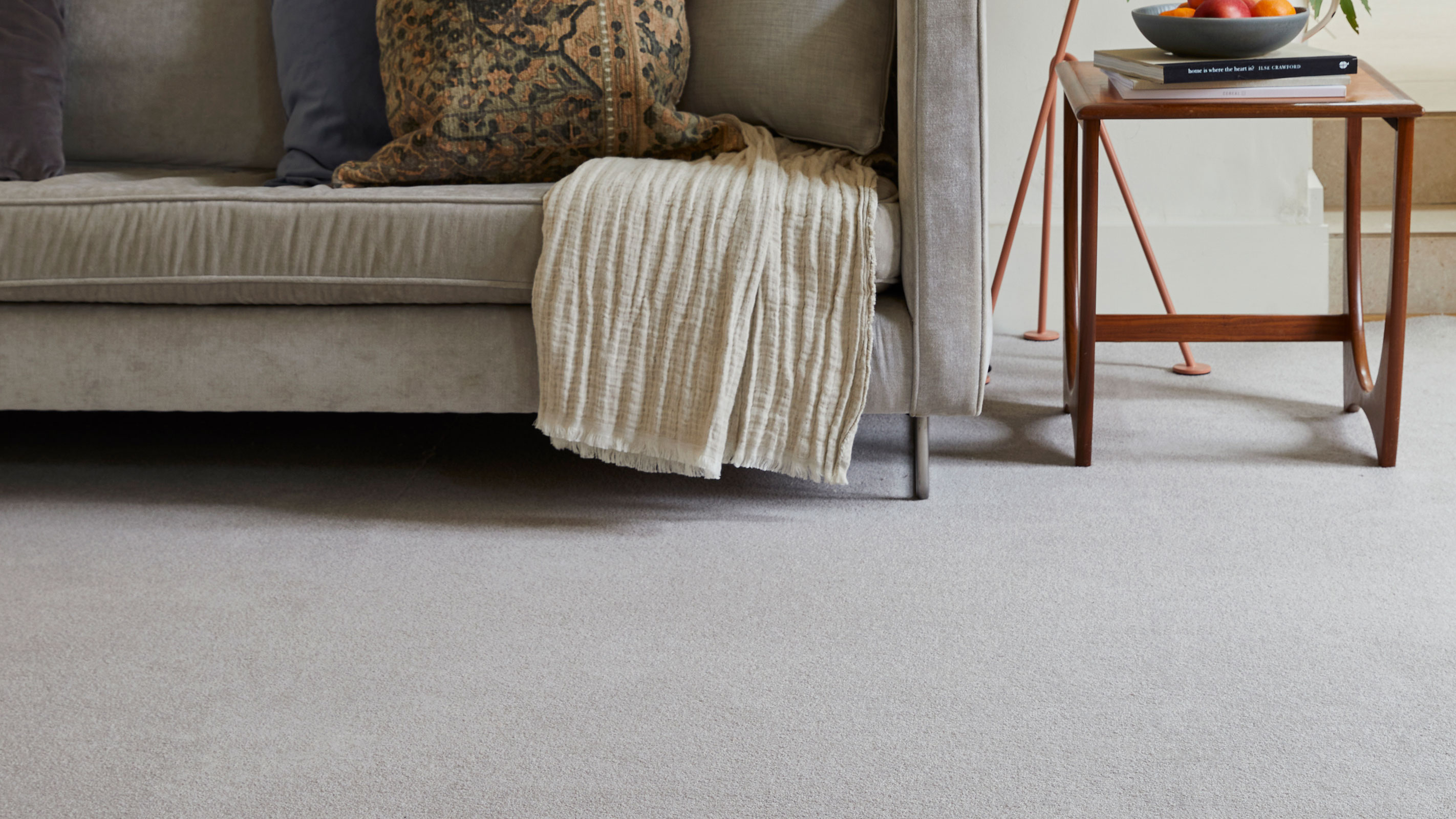
Are natural carpets suitable for living rooms?
There are many different types of natural flooring and some are better suited to living rooms than others, with jute being one of the most popular options.
"Seagrass can be used in the lounge, bedroom and dining room," says Lorna Haigh. Chunky Jute is softer underfoot for sitting rooms and bedroom and is a great base for layering rugs on top.
As with wool blend carpets, there are also options that combine the best characteristics of natural flooring and wool.
"Woosie from Alternative Flooring is a wool sisal mixing the best qualities of two natural fibres that are firm favourites in interiors," says Lorna Haigh. "The woollen yarn gives the soft feel while the hardwearing sisal adds rustic texture and lustrous shades."
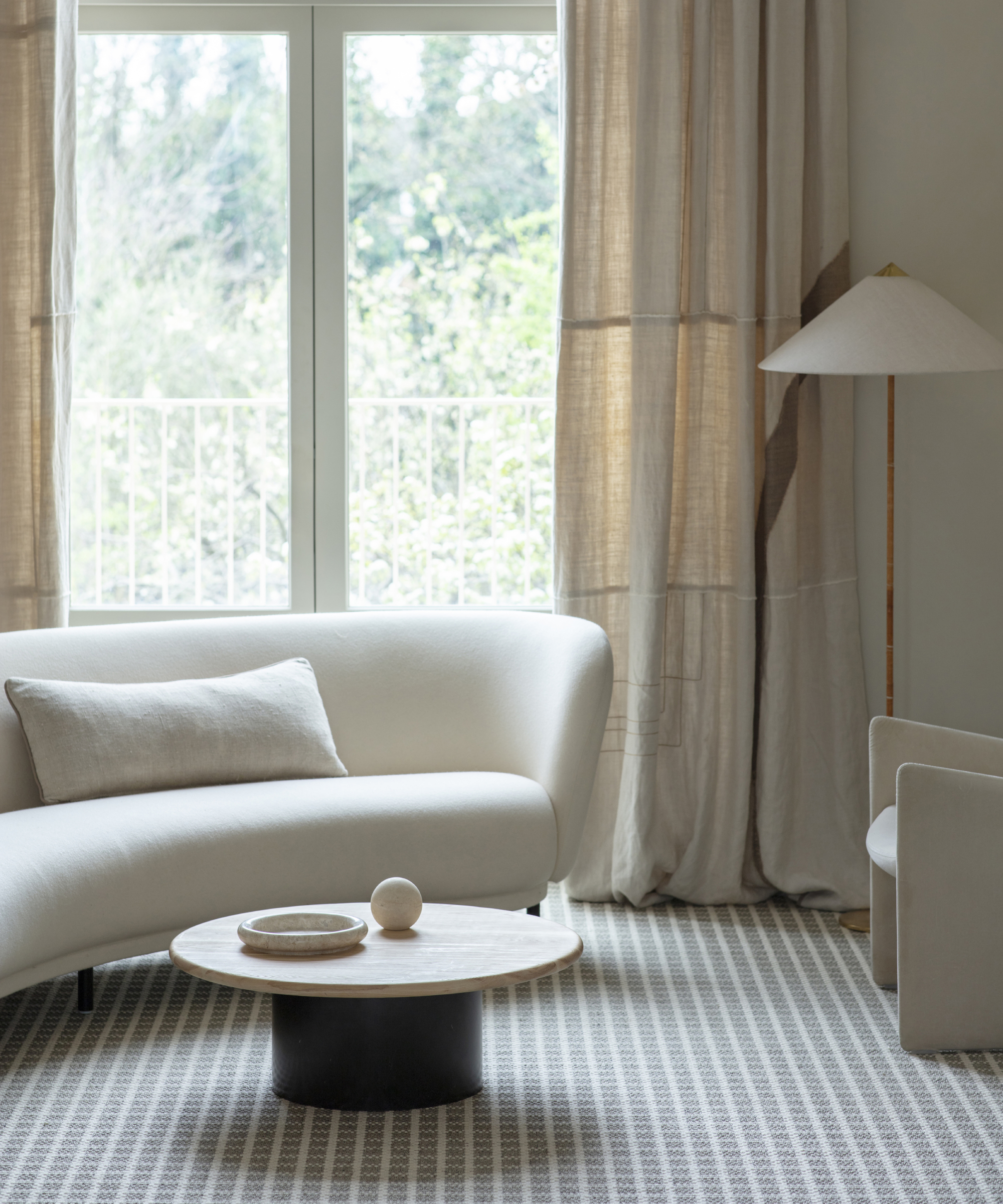
Picking the best colour, design and patterns for your living room
Obviously the shade you choose for your carpet will very much depend on your living room design and the interior look you are after, but do bear in mind that, unlike the colour you paint your walls, it will be more costly and disruptive to replace your carpet than to repaint should you change your mind.
“A neutral colour palette is best suited to rooms you spend a lot of time in, such as a bedroom or living room, where relaxing tones are key to creating a happy space," suggests Jodie Hatton. "Neutrals are versatile with the ability to provide a platform and set the scene."
"The colour palette that is chosen will dictate the overall atmosphere of a living room so homeowners should always consider what they want to achieve," adds Sarah Jenkinson. "Warmer tones such as beige, mushroom, creams and off-white create a cosier, cocooning snug-style living room, while cooler hues such as blues and greys evoke a calmer and refreshed feel. It is also always important to choose colours that we will fall in love with, and understand what shades work together to create a desired look.”
"While neutrals continue to be a best-seller for their timeless appeal, we are seeing additional colours rising in popularity," adds Lorna Haigh. "Greens have become a popular choice due to their connection with nature and a feeling of calmness in the home. Meanwhile, jewelled tones such as emerald, sapphire, and amethyst shades are being embraced for their luxurious and dramatic impact. These vibrant colours make a statement and work well in living spaces where a touch of opulence is desired.
Pattern and texture will also play a part in your decision making process, with both affecting the feel of your living room. Opting for stripes or a bolder pattern can be a good choice if you are looking to make your flooring the main focal point, or if you are opting for a more maximalist interior design.
"We’re certainly seeing an increase in customers looking to add a sense of personality to their floor, from stripes to florals, in a range of colours from soft pastels, luscious greens or deep majestic tones," says Lorna. "These vibrant colourways are a brilliant way for people to elevate their entire scheme by making their floor a centre-focus."
Herringbone on the other hand is a classic pattern that will adapt to your interior even if you change your living room decor. It can also serve the purpose of opening up a space as the pattern draws the eye in whichever direction it is laid.
Wondering if carpet will give you the modern living room ideas you're after? Yes say the experts.
“Graphic patterned carpets emerge triumphant over traditional textured and distressed styles in modern living rooms," suggests Jodie Hatton. "Look for precisely executed geometric shapes, linear designs, and stylised florals that bring a playful edge to any space. These patterns speak to both minimalists and maximalists alike, offering versatile solutions that elevate interiors while maintaining sophisticated appeal.
“For maximum impact, let these graphic statements shine against a backdrop of understated furniture," she adds. "Alternatively, embrace the art of pattern mixing - pair your graphic carpet with complementary designs for a curated, collected-over-time aesthetic that exudes personality.”
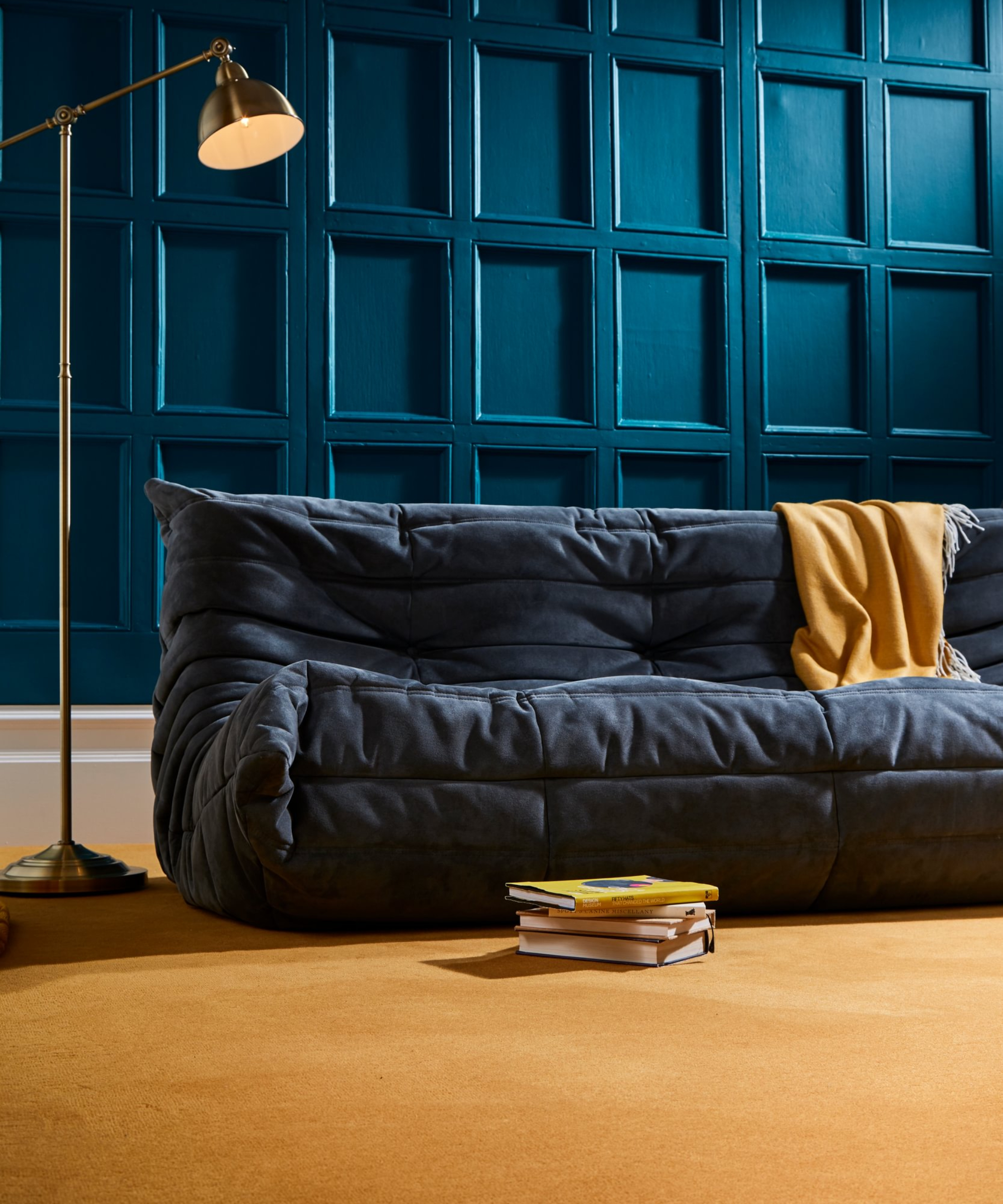
Budgeting for the best living room carpet
Carpet costs are likely to be one of your main considerations when it comes to making a choice so it helps to know what you are likely to have to budget for your flooring.
Nylon tends to be one of the cheapest types of carpet. That said, while it has good durability it can lack the softness underfoot that is desirable in a space meant for kicking back and relaxing in.
The pile of the carpet will also have an effect on cost. Cut and loop carpets are usually one of the cheaper options, with synthetic prices starting at around £6/m2, rising to approx £37/m2 for natural versions.
Loop pile and berber are other good budget choices, starting at around £6/m2 for some synthetic materials.
Next up are twist and saxony carpets coming in at around from £15/m2 up to £80/m2+.
Those on a tight budget will probably want to avoid velvet carpets which start at around £30/m2, rising to well over £150/m2. That said, they make fantastic living room carpets due to their silky soft texture.
It's also important not to forget the other parts of carpet installation costs.
“New underlay is always recommended with a new carpet," says Jodie Hatton. "There may also be costs for grippers that secure the carpet, although sometimes they can be re-used. Door bars may also be required. Fitting costs are then added.
“The average cost a fitter charges is between £5m2 - £6m2," she explains. "This usually includes the installation of the carpet and installation of all the accessories such as underlay, gripper, door bars.”
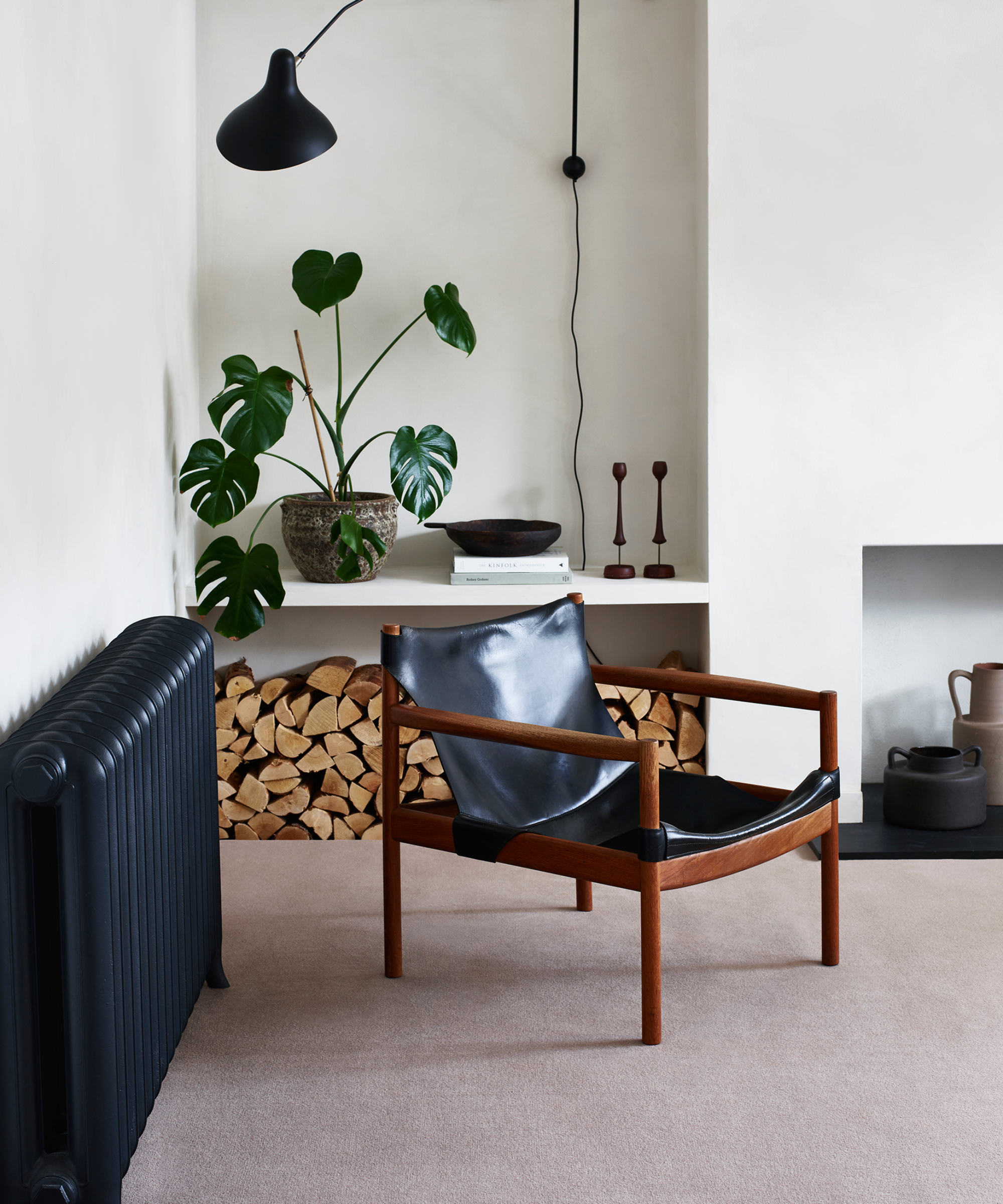
FAQs
Can I lay carpet over underfloor heating?
If you're wondering if you can have underfloor heating with carpet, it is quite possible to lay the majority of carpets over it, although they are not always the best flooring for underfloor heating and you will need to double check with your supplier.
"While carpet is a suitable choice of floor covering for underfloor heating, there are certain types of carpet that should be avoided," advises Jo Snell, new business sales manager at Nu-Heat. "If a carpet is too thick, the floor will be too well insulated for you to feel the benefit of your UFH system in the room. Certain carpet backings can also affect the ability for heat to travel through the carpet into your room.
"Carpets with hessian backing rather than rubber, are recommended for use with UFH systems," continues Jo. "Although they tend to be more expensive, the hessian allows heat to travel through the carpet whereas rubber acts as an insulator."
When choosing the best carpet for your living room, it's also wise not to scrimp on the underlay. Without a good base, even the most expensive carpet won't feel as good as it could, so make sure you check out our guide to the best underlay for carpets so you can factor this into your final cost plans.
Get the Homebuilding & Renovating Newsletter
Bring your dream home to life with expert advice, how to guides and design inspiration. Sign up for our newsletter and get two free tickets to a Homebuilding & Renovating Show near you.
Natasha was Homebuilding & Renovating’s Associate Content Editor and was a member of the Homebuilding team for over two decades. In her role on Homebuilding & Renovating she imparted her knowledge on a wide range of renovation topics, from window condensation to renovating bathrooms, to removing walls and adding an extension. She continues to write for Homebuilding on these topics, and more. An experienced journalist and renovation expert, she also writes for a number of other homes titles, including Homes & Gardens and Ideal Homes. Over the years Natasha has renovated and carried out a side extension to a Victorian terrace. She is currently living in the rural Edwardian cottage she renovated and extended on a largely DIY basis, living on site for the duration of the project.
